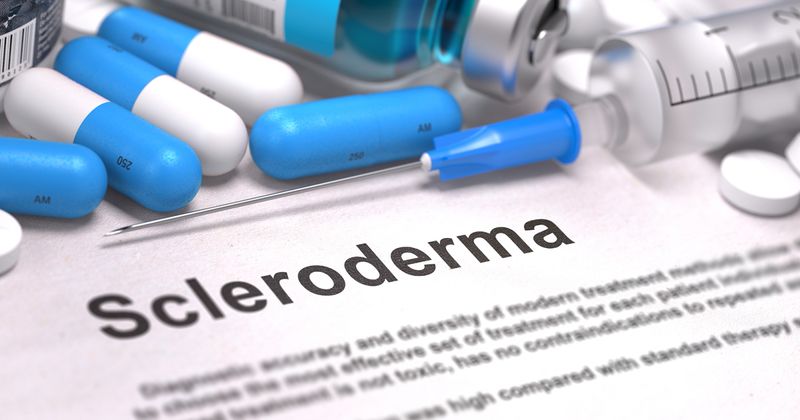'Multidisciplinary approach' strongly encouraged in systemic sclerosis
A multidisciplinary approach is key to optimizing outcomes in systemic sclerosis, given the broad range of manifestations and organ systems that may be involved, according to a presenter at the 2020 Congress of Clinical Rheumatology-West.
“The pathological hallmarks of this disease are rather diverse,” Elizabeth R. Volkmann, MD, MS, director of the UCLA Scleroderma Program, and founder and co-director of the UCLA Connective Tissue Disease-Related Interstitial Lung Disease (CTD-ILD) Program, said in her presentation. “We really try to phenotype these patients and personalize their care.”

This “relatively rare” connective tissue disease can impact 14 to 44 individuals per 100,000 in the U.S., according to Volkmann. Women are more likely than men to have systemic sclerosis, with a higher prevalence in African Americans also reported. Patient age range is usually between 30 and 60 years, but it can also occur in younger individuals.
The disease is marked by endothelial cell dysfunction leading to vasculopathy, along with Raynaud’s phenomenon, fibroblast dysfunction and excess collagen production.

The first step to managing patients with systemic sclerosis is to divide them based on the extent of skin manifestation. Multi-organ disease is more likely to develop in patients with diffuse cutaneous involvement rather than limited cutaneous involvement, according to Volkmann.
Digging into the systemic manifestations, Volkmann noted upper gastrointestinal complications may include gastroesophageal reflux disease (GERD) or Barret’s esophagus, while dysmotility may occur in the lower GI. Interstitial lung disease (ILD) leads the list of potential pulmonary complications, with pericarditis and cardiomyopathy being potential cardiac signals. Musculoskeletal disease, of course, may also occur, along with renal complications.
It is with all of these potential complications in mind that Volkmann strongly recommends working with cardiology, dermatology, gastroenterology, pulmonology and radiology colleagues, among others.
Skin, gastrointestinal and musculoskeletal manifestations are found in most patients, with a “declining prevalence” of lung, heart and kidney complications, according to Volkmann.
Early clinical signs of systemic sclerosis usually include fatigue and Raynaud’s phenomenon, along with a positive ANA.
“Patients with diffuse cutaneous manifestations go from GERD, to the lungs, then to the heart and kidneys,” Volkmann said.
Turning to treatment paradigms, Volkmann offered an overarching methodology. “We address their symptoms first and try to improve how they feel and their functioning, then we target organ function,” she said.
Mycophenolate mofetil is recommended as first-line therapy for skin involvement, followed by cyclophosphamide, according to Volkmann. For patients who fail to respond to mycophenolate, rituximab (Rituxan, Genentech) may also be considered.
Turning to lung manifestations, Volkmann noted that data show comparable efficacy for mycophenolate and cyclophosphamide, also with rituximab as an option.
In addition, nintedanib (Ofev, Boehringer Ingelheim) has gained FDA approval in systemic sclerosis and may be beneficial in the lungs. “Nintedanib does not lead to as many infections as immunomodulators,” Volkmann said, noting that, for this reason, it can be an attractive option in older patients.
For patients with inflammatory features or elevated erythrocyte sedimentation rate (ESR), Volkmann recommended tocilizumab (Actemra, Genentech). “I would also consider this in patients who are refractory to mycophenolate,” she said.
GERD may be managed by “supportive measures,” such as encouraging patients to quit smoking, chew their food thoroughly, drink water with meals and elevate their head and torso while sleeping. Proton pump inhibitors and H2 blockade are pharmacotherapeutic options in these cases.
Regarding emerging therapies, Volkmann noted that early data coming from both Europe and the U.S. have shown that stem cell transplantation may be useful for individuals with diffuse cutaneous disease and some organ involvement for those who are refractory to traditional therapeutic options. However, given the risks involved, she suggested that the procedure should be done at an “experienced transplant center.” Also, it may be risky in patients with significant, multi-organ involvement.
In the pharmacotherapeutic realm, the pulmonary fibrosis drug pirfenidone (Esbriet, Genentech) is gaining some attention for patients with lung disease, while the “potent TGF-beta receptor” AVID200 (Forbius) and the cannabinoid therapy lenabasum (Corbus Pharmaceuticals) are also under investigation in systemic sclerosis. “This is a very exciting time,” Volkmann said.









